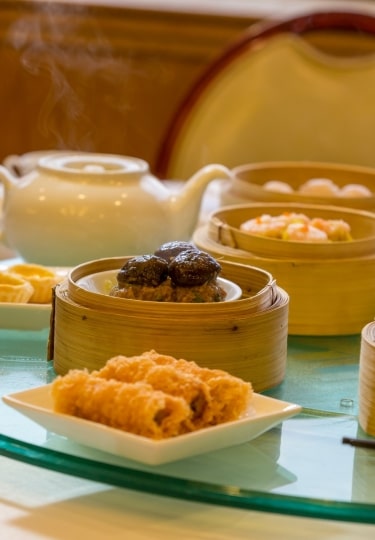These days, Hong Kong food is as diverse and cosmopolitan as its population. From French to Lebanese, anything and everything delicious can be found here.
Hong Kong’s history as a trading hub means that the cuisine here has long drawn on global influences. Even the most quintessentially Hong Kong staples are often a product of cultures colliding. While Cantonese cuisine dominates, a number of the dishes reference former colonial powers. Think: pork chops over rice, SPAM and egg sandwiches, milk tea, and egg waffles.
You may find yourself reeling from the sheer abundance of options when wondering what to eat in Hong Kong. Start your journey at a cha cha teng. These classic tea cafés serve a mix of Cantonese and Western-influenced dishes.
Then make your way to one of the city’s dai pai dongs, humble mom-and-pop-style Cantonese restaurants. Finally, dim sum, the ritualistic procession of small bites with tea, is an inevitable part of any gastronomic tour of the Special Administrative Region.
French Toast
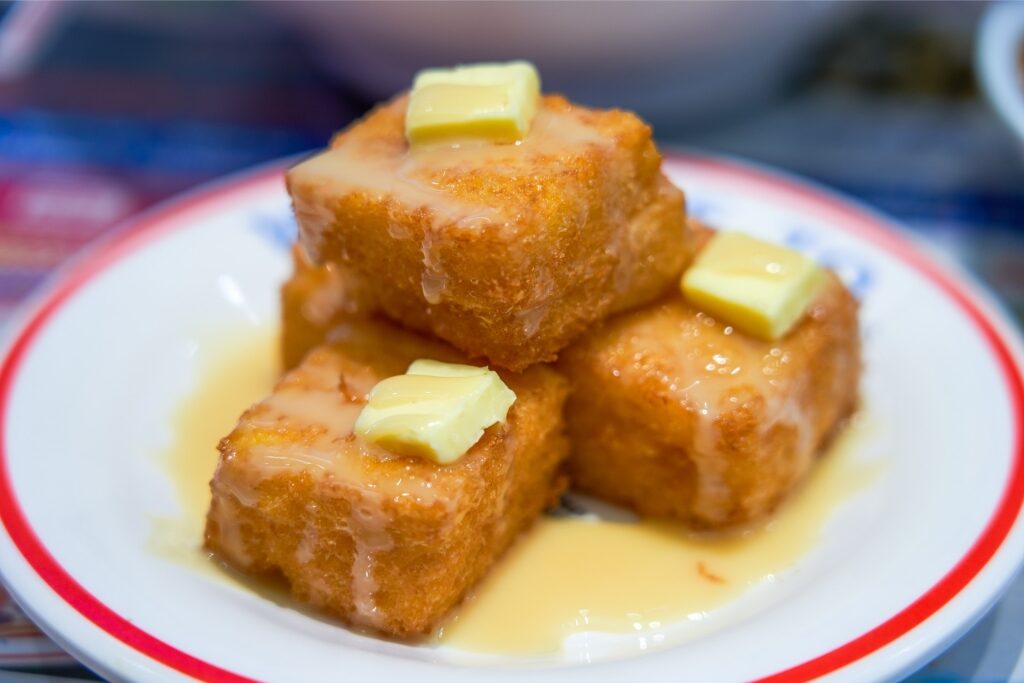
French toast
If you’ve only tried the Western version of French toast, you’re in for a real treat in Hong Kong. Hong Kong-style French toast is a staple at cha chaan tengs.
This iteration of French toast belongs squarely in the dessert category, with a flavor profile that errs on the sweeter side, thanks to plenty of sugar and sweetened condensed milk. What makes Hong Kong-style French toast so special is the array of contrasting textures that it offers.
Like its Western counterpart, it all starts with two thick slices of pillowy white bread soaked in milk, eggs, and sugar. Instead of a quick stint in a skillet with butter, however, the toast gets flash-fried in hot oil. Peanut butter gets slathered on top, followed by a second slice of French toast and a drizzle of sweetened condensed milk.
Milk Tea
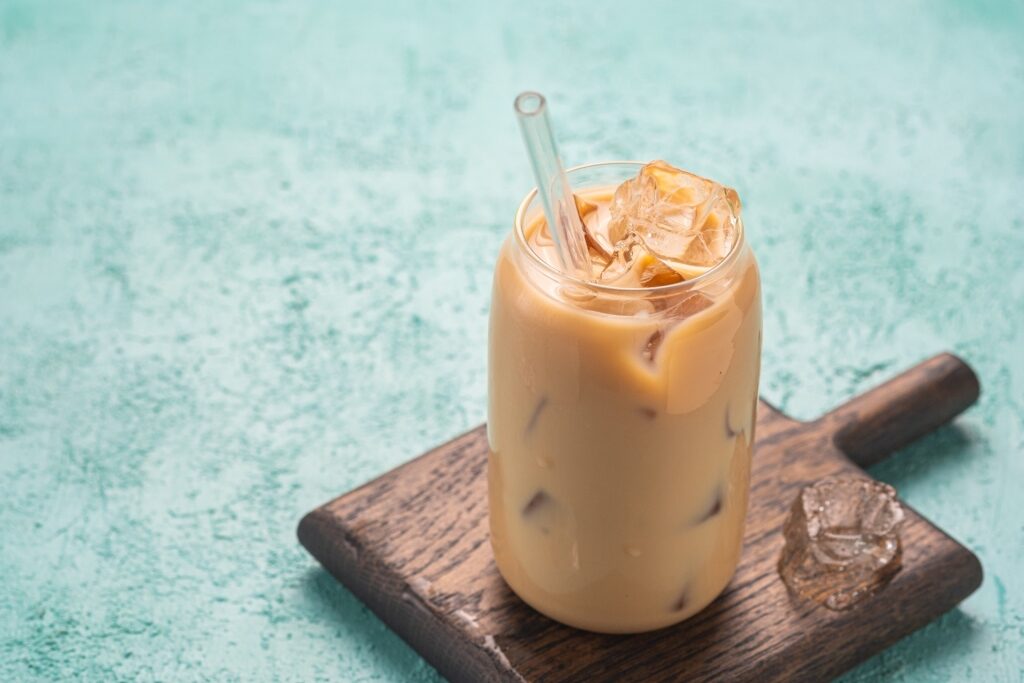
Milk tea
One of the leftover hallmarks of British colonial rule in Hong Kong is a prevailing fondness for milk tea.
Although the drink has its roots in England’s afternoon tea ritual, Hong Kongers have very much made it their own. Hong Kong-style milk tea starts with strong black Ceylon tea, which is then enriched with condensed milk or evaporated milk.
Sometimes nicknamed “silk stocking tea” in reference to the bag used to brew it, milk tea is ubiquitous in Hong Kong’s cha chaan tengs and dai pai dongs. It’s an ideal afternoon pick-me-up or accompaniment to just about any sweet.
Char Siu
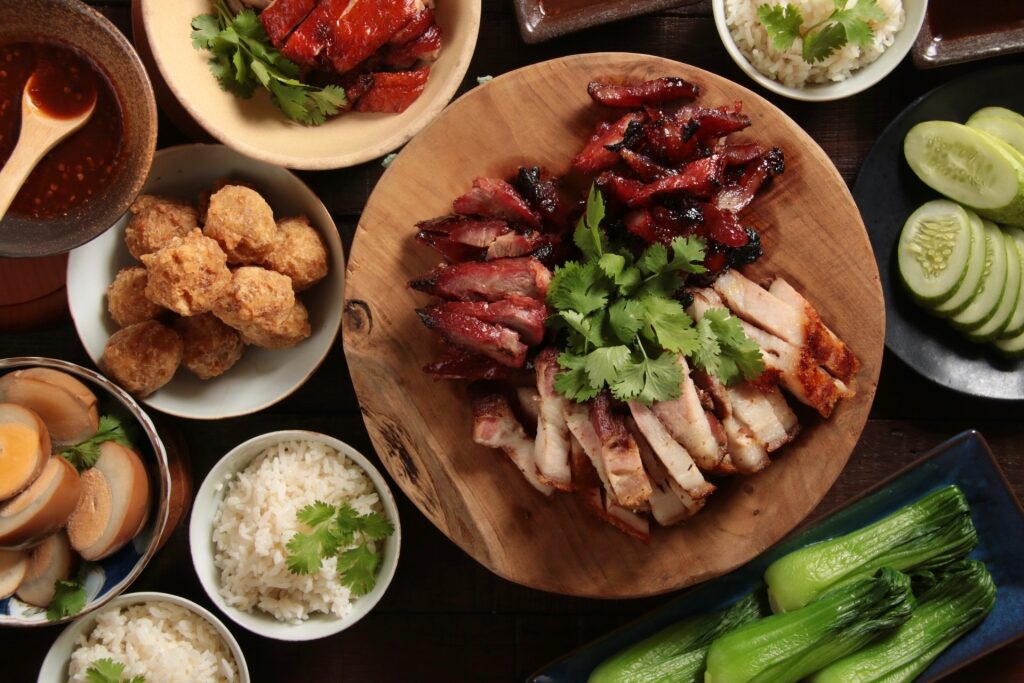
Char siu
Cantonese-style roasted meats have a history stretching back more than 3,000 years in southern China. Char siu, or roasted pork, is a backbone of the genre and a true delicacy worth seeking out. Under the searing heat of the specialized oven, fatty cuts of pork marinated with soy sauce, sugar, and often a touch of red food dye develop a gorgeous, burnished exterior.
Because making char siu is both time- and labor-intensive, this is one staple that Hong Kongers leave to the professionals. And with so many restaurants displaying expertly roasted pork in their windows, it’s easy to see why. Char siu is delicious served over rice in a takeout container, although it also appears in noodle soups, pork buns, and all sorts of other dishes.
Roast Goose
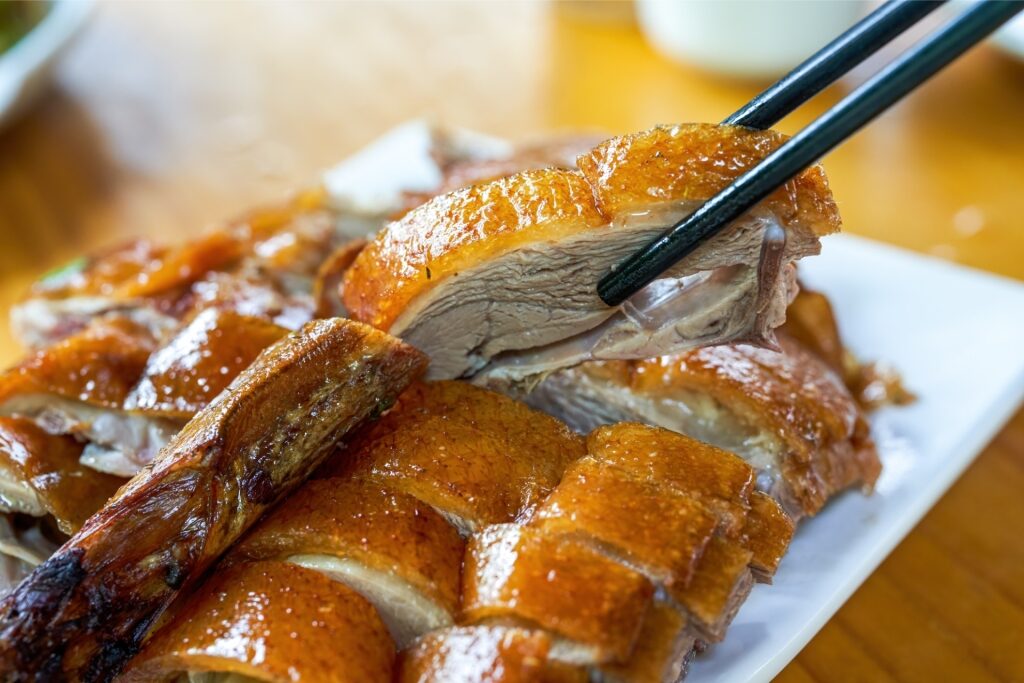
Roast goose
Many of Hong Kong’s roasted meat joints will have mahogany-skinned geese hanging next to the char siu in the window. Like the best Beijing kao ya, Cantonese-style roast goose is all about the contrast of juicy, well-seasoned meat and crisp, lacquered skin.
By far the most famous place in Hong Kong for this dish is Kam’s Roast Goose, which has scored a Michelin star year after year. Equally good and also bearing a Michelin star is Yat Lok, a local institution since 1957. Both places tend to have long lines, but the goose is worth the wait.
Wonton Noodles
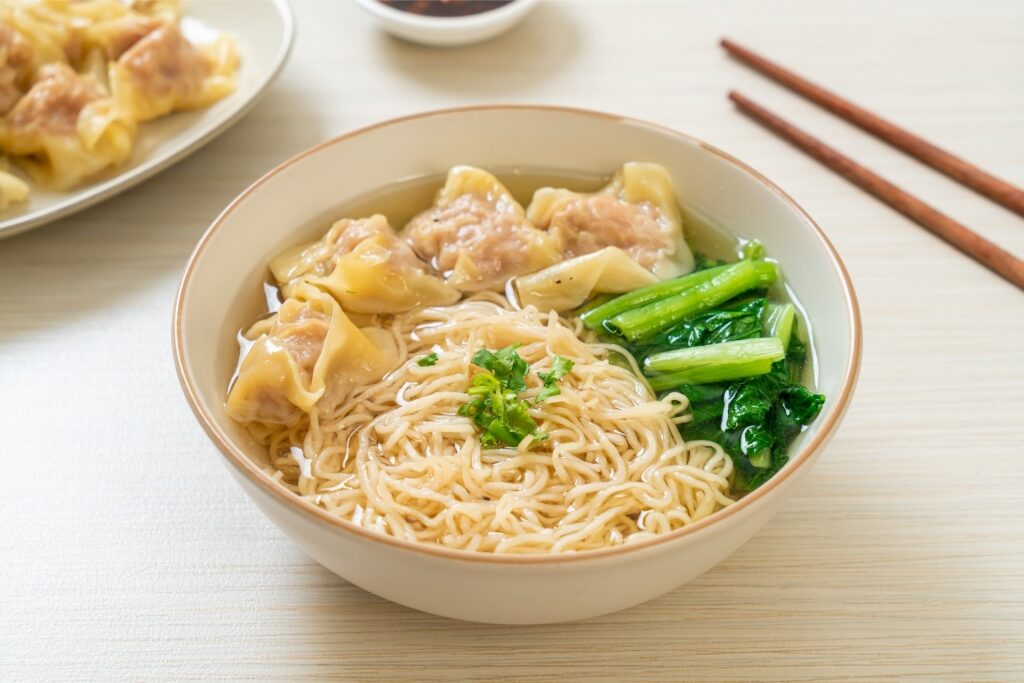
Wonton noodles
Wonton noodles are a Cantonese staple common throughout the global Chinese diaspora. You’ll find variations around Thailand, Malaysia, Singapore, Indonesia, and cultural enclaves from North America to Europe. All of these bowls consist of thin egg noodles and dumplings, either swimming in broth or served dry.
In Hong Kong, shrimp-filled wontons are the de facto option, although some places use a mixture of shrimp and minced pork. Leafy greens like gai lan, or Chinese broccoli, are a common addition. The broth here often contains dried flounder, which adds an extra-savory note. Unlike Thailand, Malaysia, and Singapore, sliced char siu is rarely added as a topping in Hong Kong.
Read: Singapore Vs. Hong Kong: Which Should You Visit?
Siu Mai
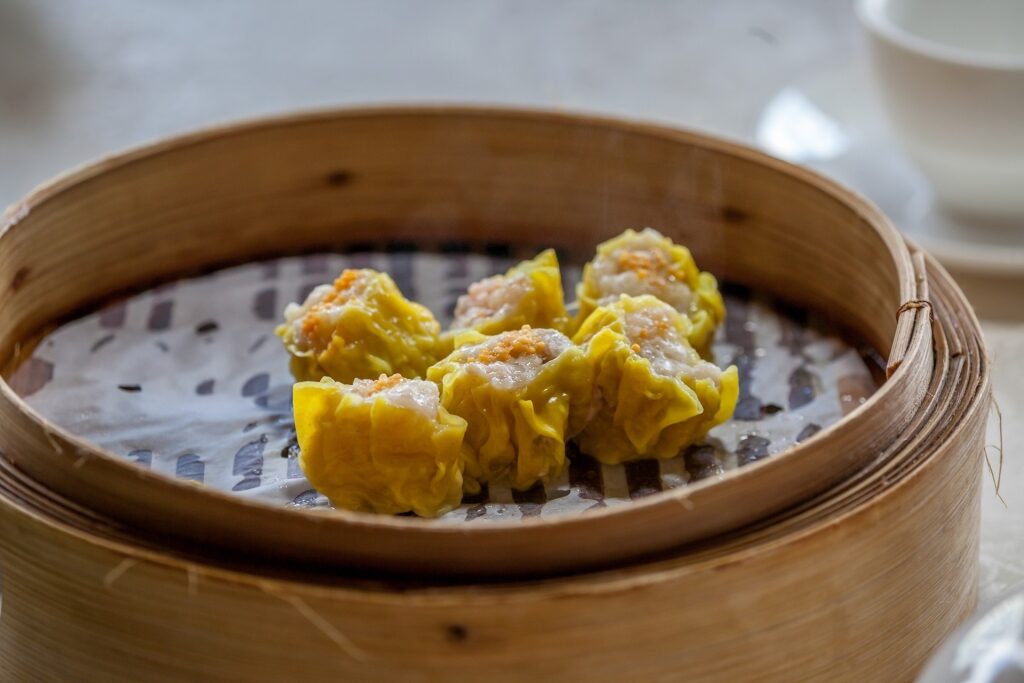
Siu mai
Siu mai, sometimes spelled as shumai, are a cornerstone of Hong Kong dim sum culture. These bite-sized steamed dumplings come with scrunched, usually yellow wrappers made with a lye water dough.
The filling, which peeks out of the top, is often made of minced pork and dried mushrooms. At some establishments, shrimp or even crab filling may be used instead. In the case of these more luxurious dumplings, an orange dot of crab roe is often placed in the center.
Char Siu Bao
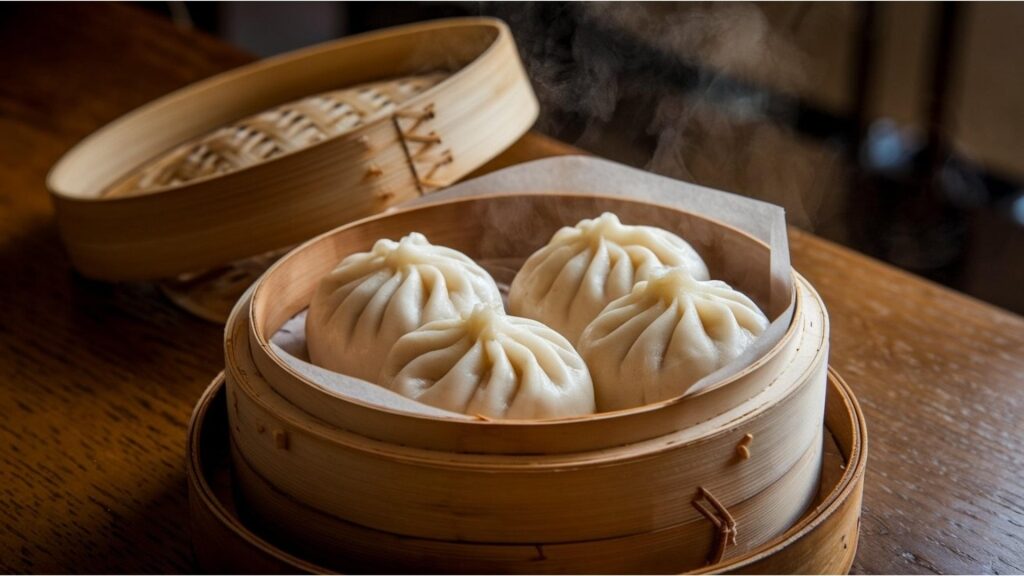
Char siu bao
Another dim sum staple, char siu bao are puffy steamed buns stuffed with roast pork, or char siu. Thanks to the double leavening action of baking powder and yeast, the dough tends to be particularly soft and fluffy. Char siu bao tends to be more substantial than many other dim sum, such as har gow, pleated shrimp dumplings in rice flour dough.
Alongside the usual steamed char siu bao, some Hong Kong restaurants offer baked variations. In many cases, expect a slightly richer pastry crust, which adds a buttery note to the already rich filling.
Egg Tart
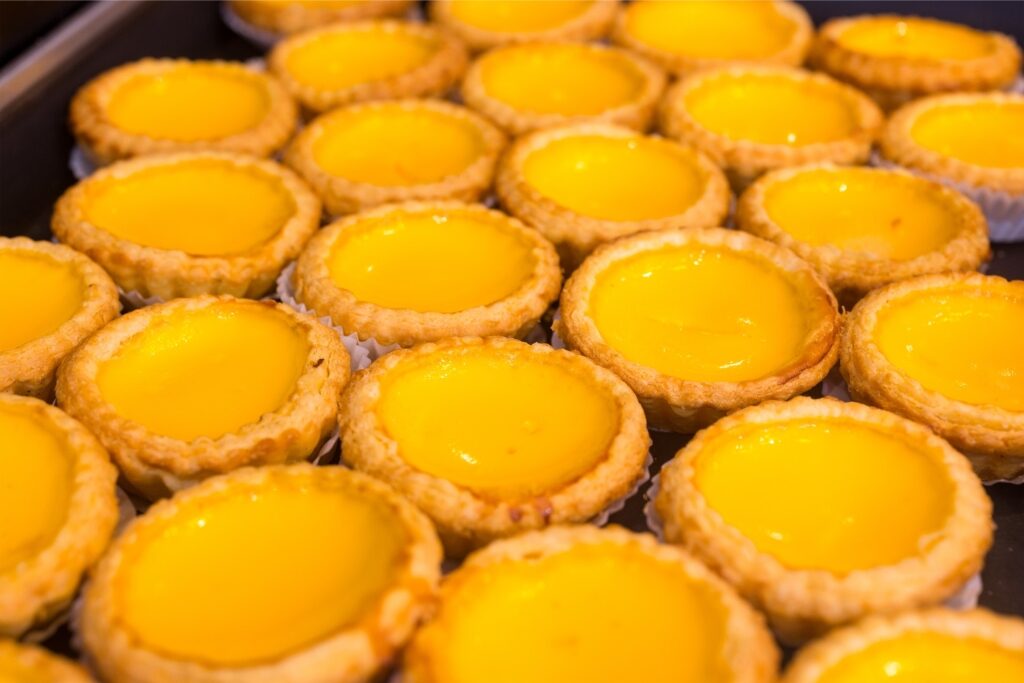
Egg tart
Pastéis de nata may have originated in Portugal, but these luscious sweets are deeply embedded in the cultural fabric of Hong Kong these days. Like their Portuguese ancestors, egg tarts contain a yolk-rich custard filling in a pastry shell. The whole confection is on the smaller side, meant to be consumed in two or three bites.
As is often the case when dishes migrate across continents, these treats have evolved over time. Hong Kong-style egg tarts tend to feature a sturdier shortcrust, in contrast to the laminated, flakier pastel de nata crust. The filling tends to be slightly less sweet and even silkier, too.
Pineapple Bun or Bolo Bao
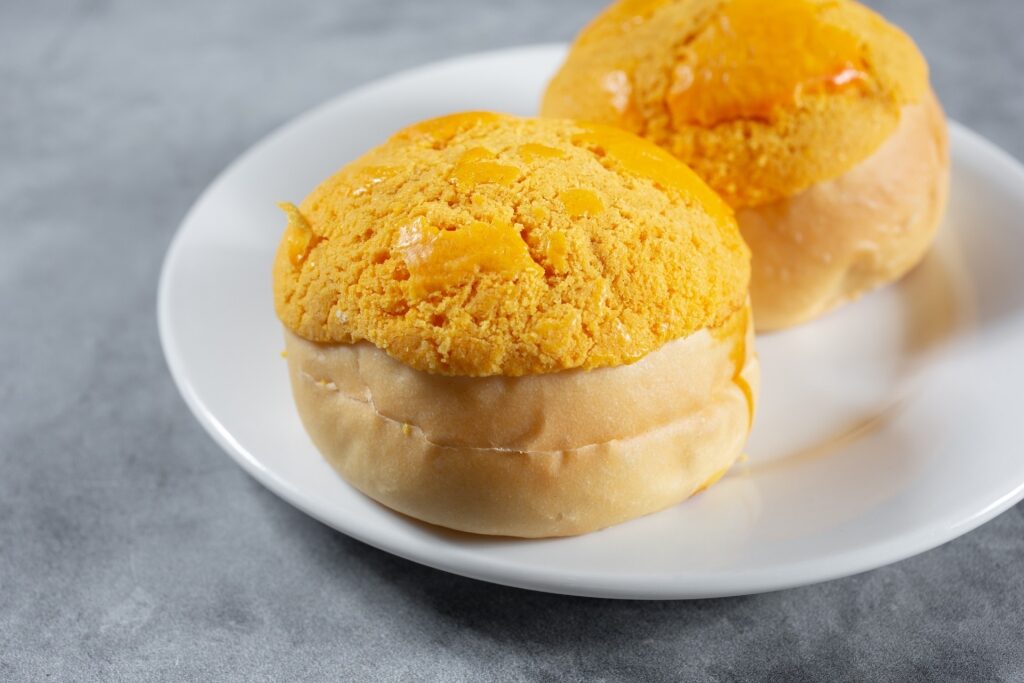
Bolo bao
Despite what the name might lead you to believe, a pineapple bun contains no actual pineapple. Rather, the golden, crunchy exterior is thought to loosely resemble the tropical fruit. No one quite knows who invented or named them. There are anecdotal accounts of these sweet breads being baked in Hong Kong as early as the 1940s.
Bolo bao make for an ideal on-the-go treat from a local bakery, although many of Hong Kong’s cha chaan tengs will also serve them warm from the oven at tea time. The plain variety is typically made with flour, sugar, eggs, and lard or butter. While the plain variety is already tasty, fillings like sweet custard or savory roast pork really gild the lily.
Congee
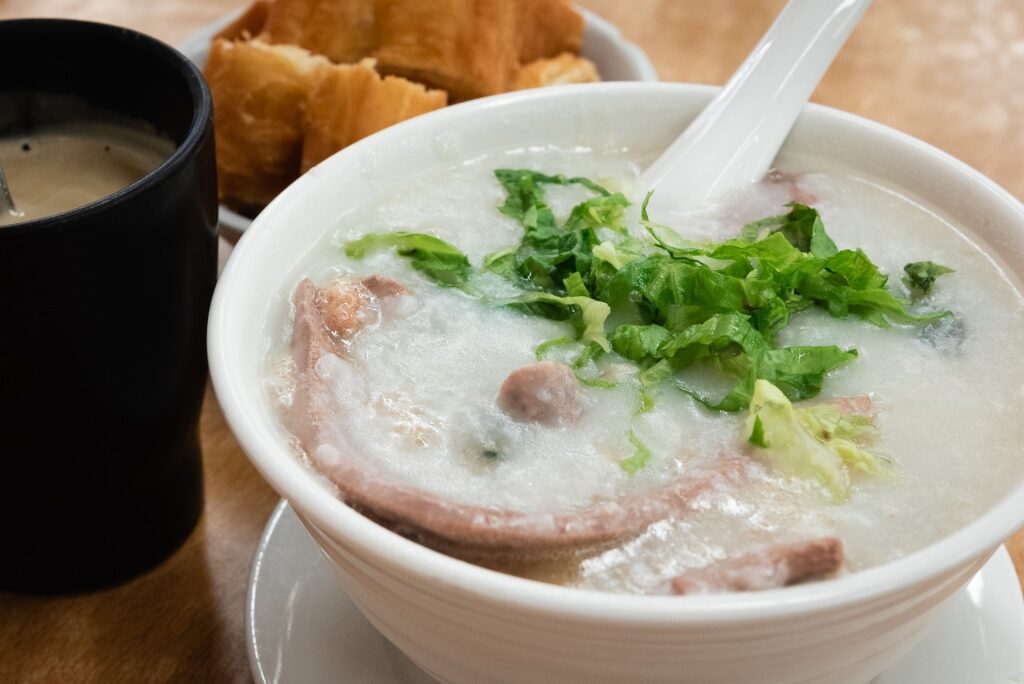
Congee
If Westerners turn to chicken noodle soup when under the weather, this is Hong Kong’s de facto culinary panacea. Straddling the line between a rice porridge and soup, congee is a supremely comforting, largely neutral canvas for other flavors and additions.
In its simplest form, this dish can consist of little more than long-grain white rice cooked in chicken stock. From that beginning, however, cooks often add everything from fatty pork to chicken, century or preserved eggs, Chinese sweet sausage, vegetables, and seafood. Some versions swap in brown rice or other grains, although this is not traditional.
Sampan congee, a Cantonese specialty that hails from the Pearl River area in Guangzhou, is especially beloved in Hong Kong. Recipes vary, but often contain pork stock and meat, along with sliced freshwater carp, dried shredded squid, and fried peanuts.
Clay Pot Rice
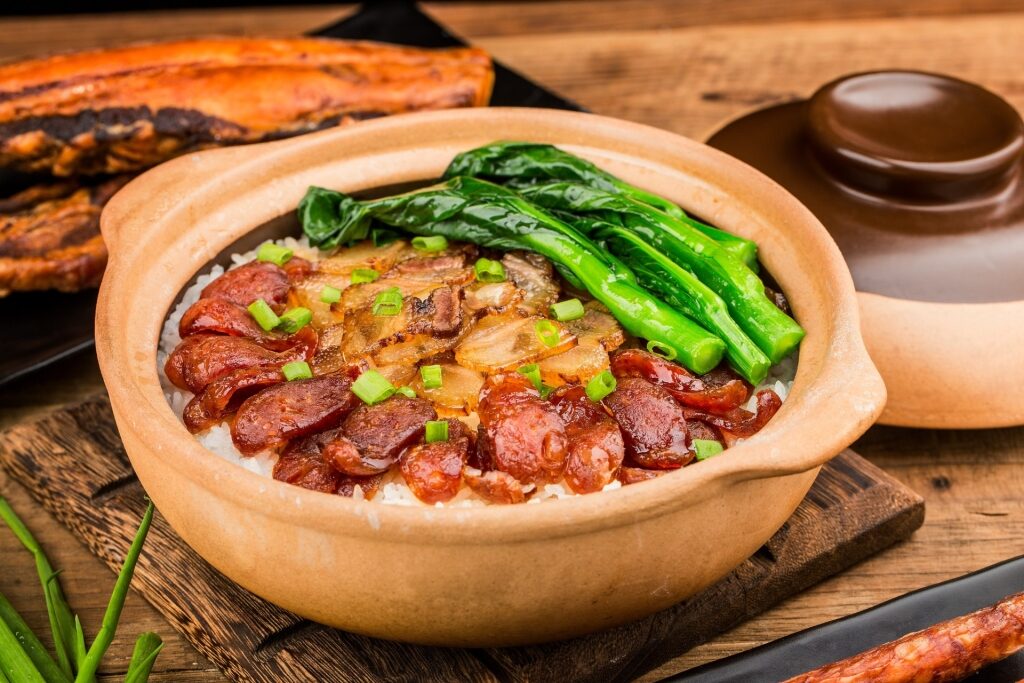
Clay pot rice
If you’re looking for an ultra-satisfying one-pot meal, look no further. Clay pot rice consists of long-grain rice in an earthenware vessel with all sorts of toppings. Countless variations exist, although pork belly, Chinese sausage, and other preserved meats are popular. Sweet soy sauce amps up the umami and brings it all together.
As with so many rice dishes around the globe, the best part here is the crispy layer of toasted rice at the bottom. Much like a Korean bibimbap, claypot rice sizzles against the hot container until crunchy, golden bits form. When you eat it, mix the whole glorious thing together with your chopsticks.
SPAM & Egg Sandwiches
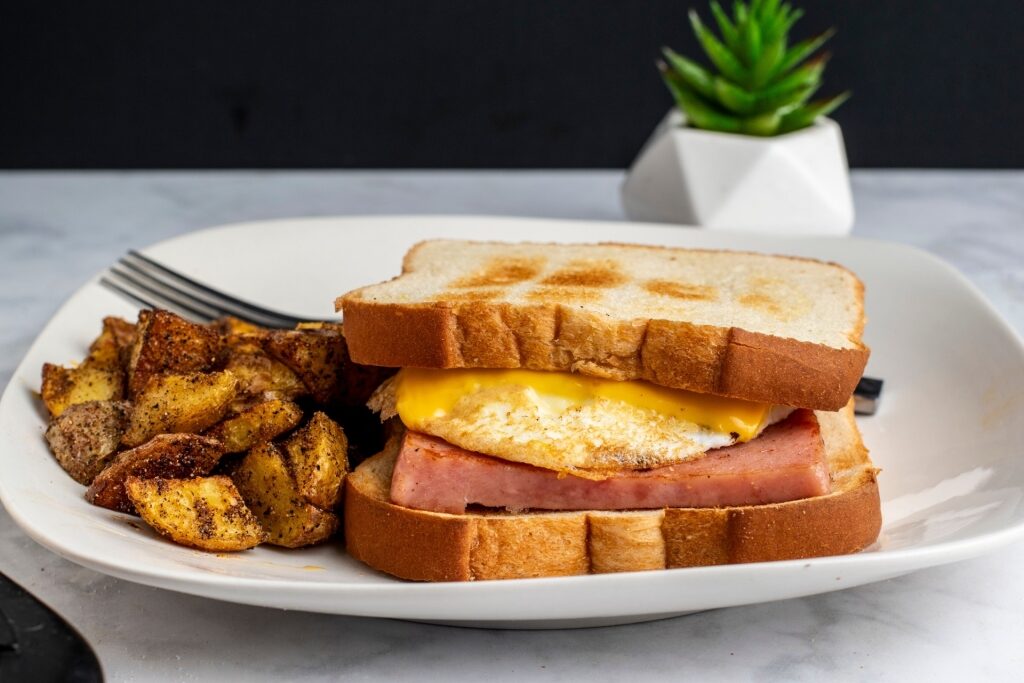
SPAM & egg sandwich
SPAM and egg sandwiches are roughly to Hong Kongers what a bodega bacon, egg, and cheese is to New Yorkers. This is peak comfort—or hangover—breakfast food, typically served at cha chaan tengs.
SPAM, once a key component in American military rations, has a special place in the hearts of many Hong Kongers. In the wake of the Second World War, the cheap, shelf-stable meat made its way into everything from instant noodle dishes to sandwiches.
A SPAM and egg sandwich starts with two slices of buttered milk toast, then gets layered with seared slices of SPAM and softly scrambled eggs. If you’re unfamiliar with SPAM, rest assured that a quick fry in the skillet renders it crisp-edged and quite tasty.
Typhoon Shelter Crab
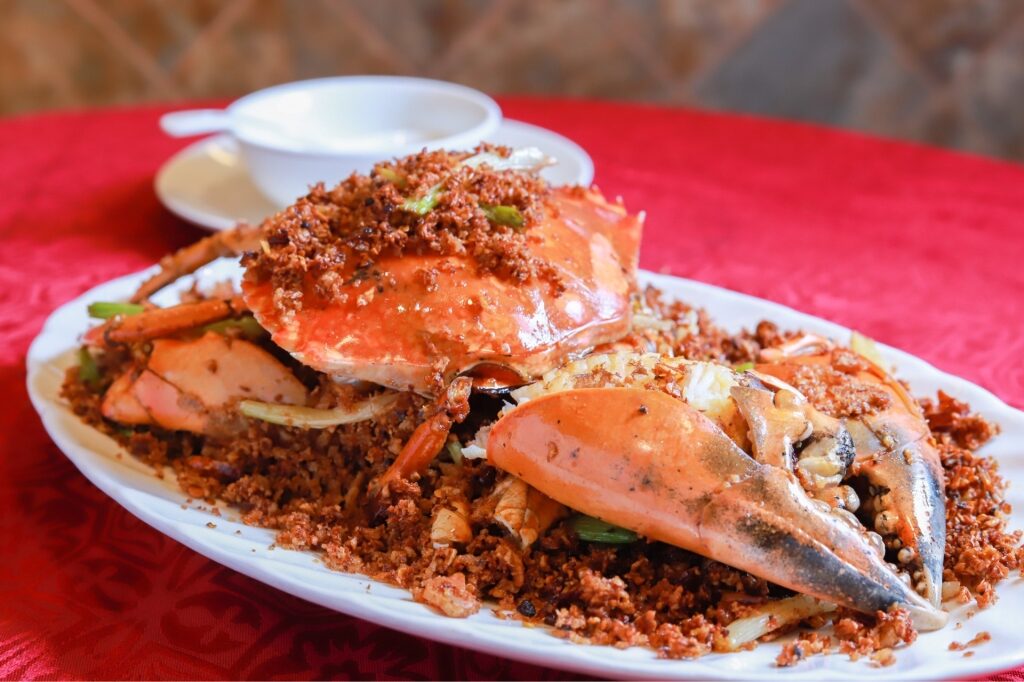
Typhoon shelter crab
There are endless opportunities to splurge on really fabulous food in Hong Kong, but if you pick just one, this should be it. Typhoon shelter crab earned its name from the fishermen who would dock their boats in Causeway Bay during storms. Nowadays, there are a number of restaurants serving the delicacy in the area.
The dish starts with a whole crustacean—the bigger, the better—which gets deep-fried, showered with fried garlic and served with a spicy sauce. Although Cantonese cuisine tends to eschew chilies, this is a rare dish that packs some serious heat. A cold beer is essential to wash it down.
Curry Fish Balls
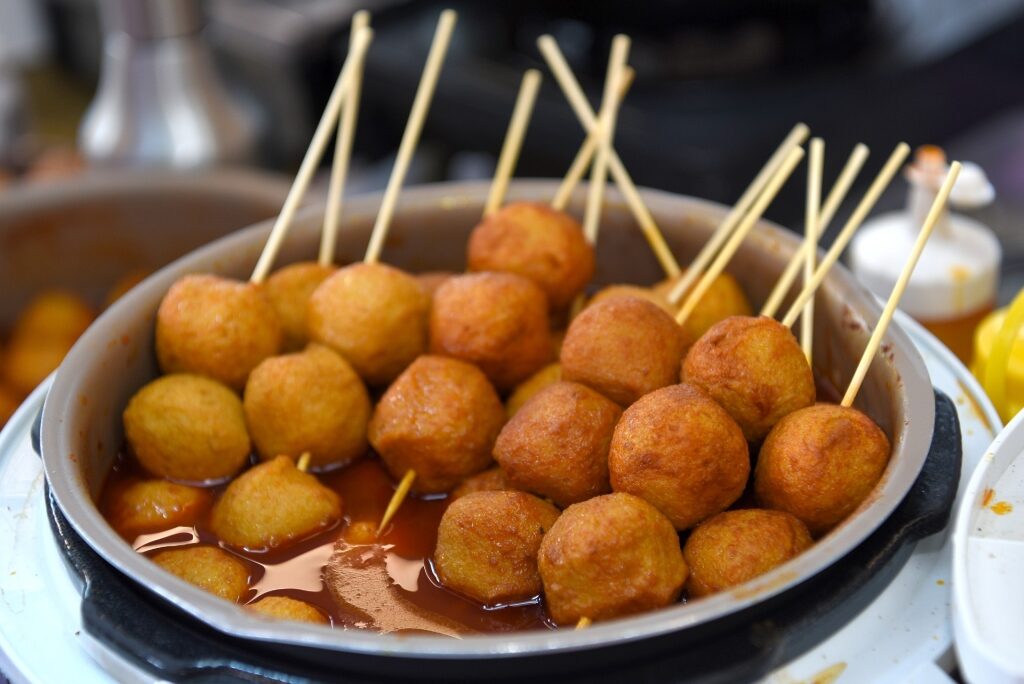
Curry fish balls
When it comes to classic Hong Kong street foods, curry fish balls rank high on the list. The small orbs are made with fish paste, the result of pounding fish together for a uniform texture. When made properly, they should have a satisfyingly bouncy texture. Various fish may be used, although daggertooth pike conger and flathead mullet are the usual choices here.
Fish balls pop up in all sorts of preparations ranging from hot pot to noodles in Hong Kong. One of the most popular variations is curry fish balls. These are typically served on skewers and simmered in a rich, slightly spicy curry sauce.
Cheung Fun
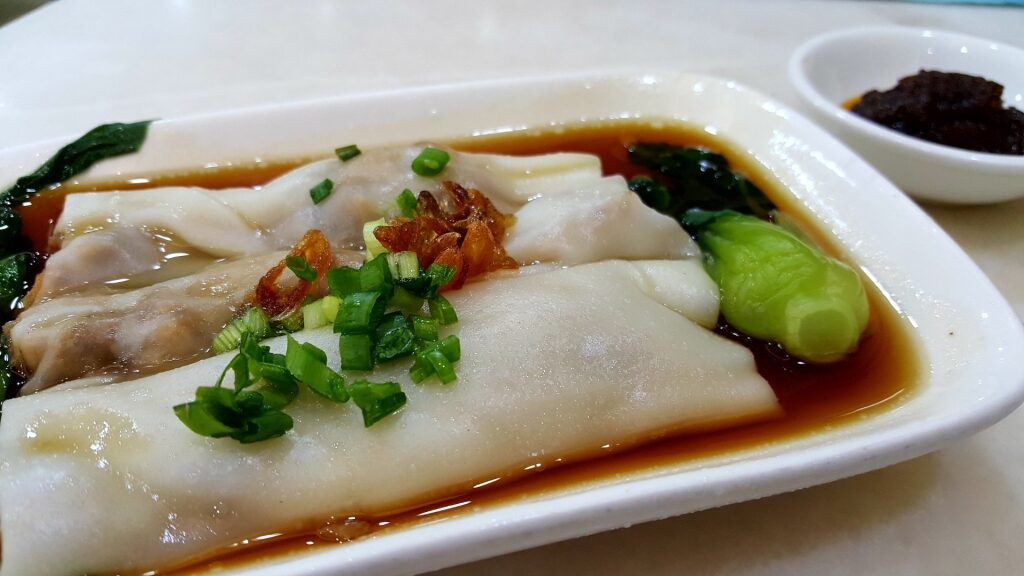
Cheung fun
Steamed rice rolls, or cheung fun, are ubiquitous at dim sum parlors, although they may be just as easily enjoyed on their own.
This Cantonese classic is all about texture—the slippery, thin noodles playing off tiny morsels of savory fillings. To make them, cooks pour a thin rice flour batter into flat, perforated pans and ever-so-briefly steam the noodles.
Making cheung fun is a real art, due to the precision of timing required and the fragility of the noodles. Common fillings in Hong Kong include char siu, fresh or dried shrimp, and beef, with sauces such as hoisin, XO sauce, or soy sauce usually drizzled on top.
Egg Waffle
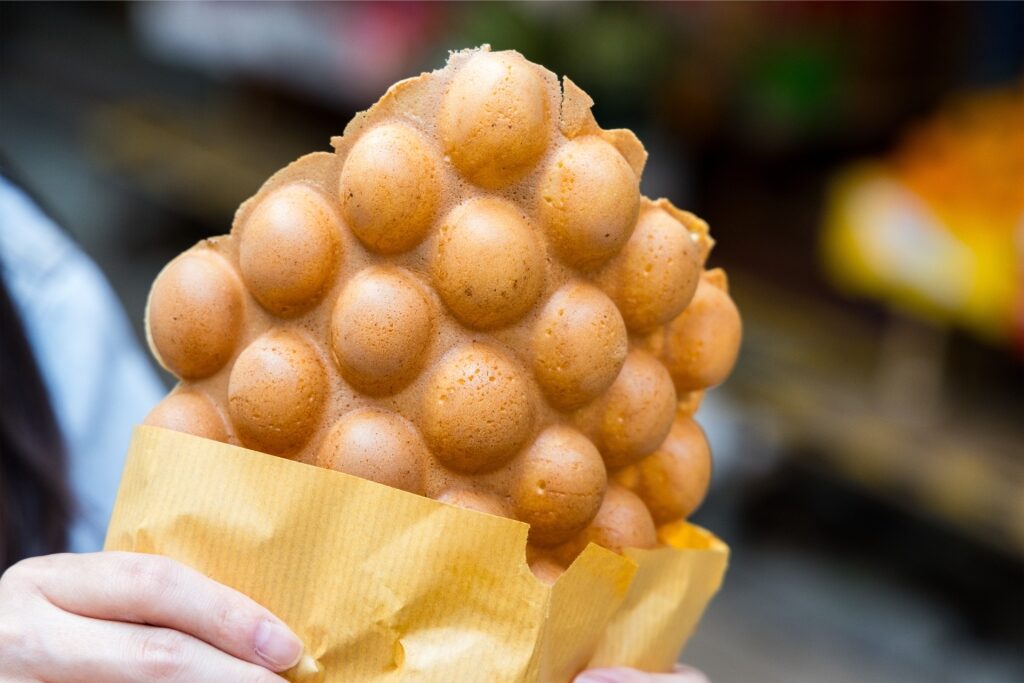
Egg waffle
Sometimes referred to as bubble waffles or gai daan jai, this superb street snack is immensely popular. In contrast to Belgian waffles, egg waffles are often served wrapped into a cone shape. The name comes from the mold, which resembles a series of interconnected, oblong shapes—almost like oversized bubble wrap.
Recipes vary quite a bit, although generally egg waffles are made with an especially sweet, egg-rich dough, which gives them a lovely golden hue.
Traditionally, they’re cooked over live coal fires, which adds a subtle extra dimension of flavor. Modern renditions add on everything from whipped cream and strawberries to chocolate or matcha flavors.
Read: 3 Days in Hong Kong

Hong Kong
Hong Kong is full of delicious things to eat and one of the best ways to visit is on a cruise throughout the region. Browse Celebrity’s cruises to Hong Kong and book your next culinary adventure today.
